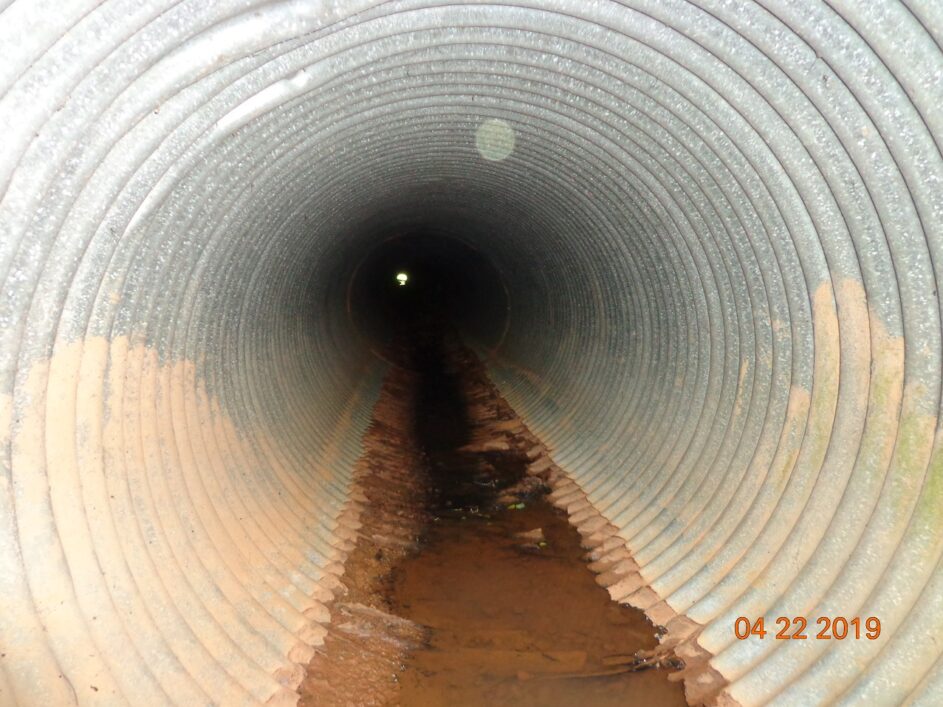The photos from the camera snaked into the below-ground stormwater pipe tell Chris Howley all he needs to know: The steel bottom of the decades-old pipe has rusted out, and without intervention, the pipe is going to fail. A hole over the pipe will form, and it will damage and close a major street – possibly for months.
Fortunately, the city’s stormwater engineers can fix corroded pipes before they fail. And the city has committed nearly $1.5 million in recent years – $669,000 this budget year alone – to solve some of the most difficult-to-reach stormwater infrastructure challenges.
The repairs can be made by placing a new liner in a decaying pipe, so the old pipes don’t even have to be dug up.
“This is a win, on several levels,” said Howley, the city’s engineering planning chief who oversees stormwater operations. “There’s no longer a traffic diversion for two or three months while a new pipe is installed; now, it might be two or three days.
“If a pipe has severely decayed and can’t be lined, and we need to go in and dig it up, it might cost three times as much … than if we’d gotten to it earlier. If the pipe fails and it becomes an emergency, it might cost six times as much to fix.”
The rehabilitation process is known as cured-in-place pipe (CIPP). A felt lining, much like an open-ended sock, is inserted into a damaged pipe while it’s still in the ground. Resin within the liner is then exposed to a curing element that makes it harden and adhere to the inner walls of the pipe. Once fully cured, the lining becomes the de facto new pipe, and Howley said the pipe’s lifetime is extended roughly another 50 years.

The restored pipe under Ed Shouse Drive.
Note the “before” and “after” photos of a 4-foot pipe beneath Ed Shouse Drive. This first photo (at top) shows what the failing pipe looked like in spring 2019. Note the standing water and rusted bottoming-out of the pipe.
Compare that to the photo (at left) from summer 2020. The smooth white walls are the CIPP liner, minus the ridges and grooves of the original corrugated metal, which encouraged sitting water that, over a long time, would lead to pipe deterioration.
Not many years back, a hole in the road developed near the intersection of Gay Street and Church Avenue downtown due to a stormwater pipe failure. It happened in a tricky spot, and crews had to pump water around the clock while the repair was made. The intersection was closed for about three months.
A similar situation nearly arose involving a large stormwater pipe underneath World’s Fair Park Drive, but a CIPP solution earlier this month led to a much different outcome.
“The street was closed altogether for about a week and a half,” Howley said. “If we’d had to dig up the pipe, replace it and repair the road, then that part of World’s Fair Park would have been closed all summer.”
In the current round of CIPP projects, 2,083 linear feet of pipe are being repaired at seven different locations, including the Fourth and Gill, Parkridge and Fair Garden neighborhoods.
Howley said projects are selected in part by how deeply buried the pipes are, and therefore how difficult a replacement would be, as well as how imminent a pipe failure might be. Infrastructure is continually being inspected, assessed and ranked for priority.
To attain efficiency and to stretch tax dollars, stormwater infrastructure is also inspected prior to city street paving.
“We always want to try to precede the paving, so that if a pipe replacement is needed, we don’t want to tear up a freshly-paved street,” Howley said.
Eric Vreeland is deputy director of communications for the city of Knoxville.


0 Comments on “City attacks deteriorated stormwater pipes”
Pingback: City attacks deteriorated stormwater pipes – Knox TN Today – My Blog